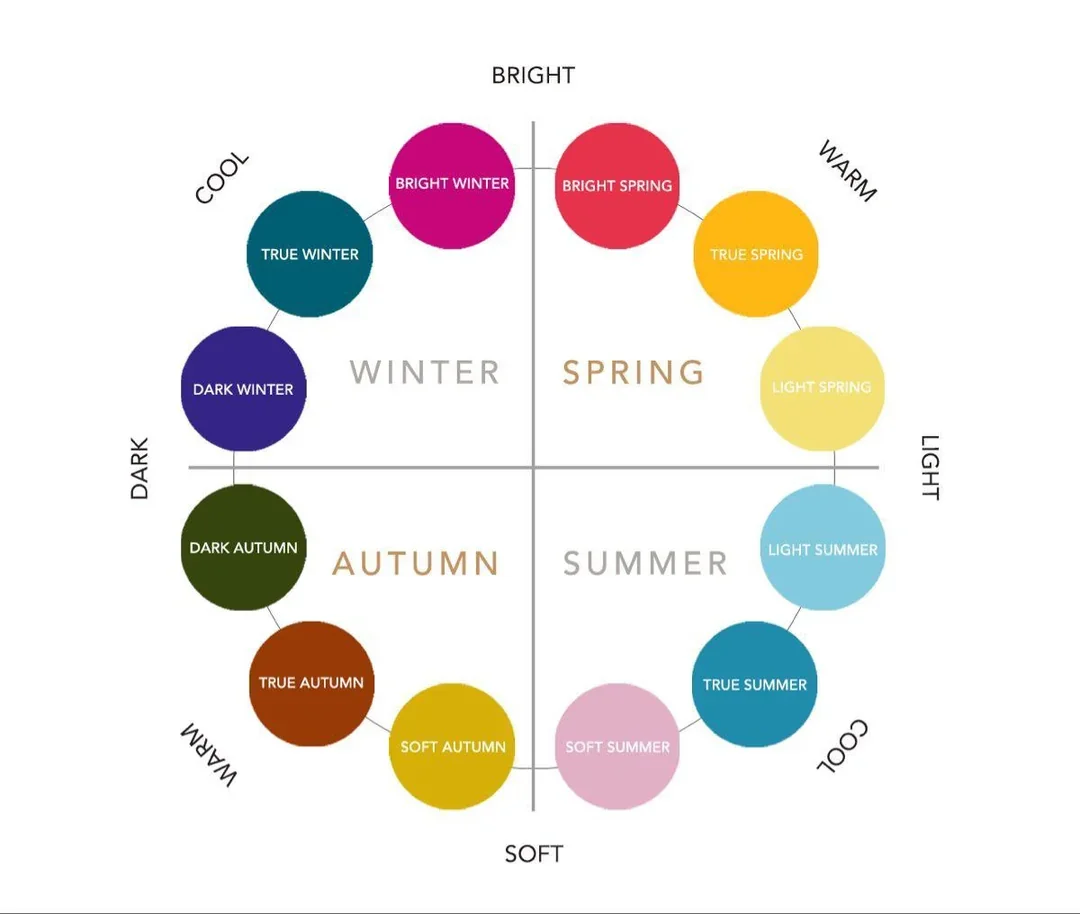The Complete Guide to Western Colour Analysis: 4, 12, 16 & 24 Seasons Explained
Colour analysis isn’t just a passing trend, in the West, it’s been a core part of fashion, styling, and image consulting for decades. From department store stylists in the ‘80s to today’s personal branding coaches, Western colour analysis created the “seasonal palette” framework the world still recognises.
At MMNine Lab, we understand not just the modern Asian colour systems, but also the classic Western ones. Here’s everything you need to know about how Western colour analysis works, how the systems differ, and which ones actually matter for you.
What is Western Colour Analysis?
Western colour analysis is all about categorising your natural colouring into a “season”, and then building your wardrobe (and sometimes makeup) around it.
It’s structured and practical:
✅ Helps you know what colours to buy (and what to stop wasting money on).
✅ Often used by image consultants for career coaching or executive styling.
✅ Famous for its “what NOT to wear” approach (if you’ve ever been told, “Autumns can’t wear black,” that’s Western colour analysis at work).
So The Big Four Systems, What’s The Difference?
1. The 4-Season System (The Classic)
The original, widely recognisable model: Spring, Summer, Autumn, Winter.
Categorises people by:
Undertone: Warm vs Cool.
Value/Contrast: Light vs Deep.
✅ Where it’s used:
The base system everywhere, still used in department stores, classic image consulting courses, and by stylists in the US, UK, Australia.
✅ Pros: Easy to understand.
❌ Cons: Too broad — lots of people don’t fit neatly into just one “season.”
2. The 12-Season System (The Sweet Spot)
Wheel vs. List — Which Is Better?
There are two ways to present the 12-season system:
The List: Keeps things tidy — you can see exactly which 3 subcategories belong to each season. Great for quick reference.
The Wheel: Shows how the seasons flow into each other — Bright Winter sits right next to Bright Spring, Dark Autumn blends into Dark Winter, etc.
Why the wheel is better for most clients:
You instantly see the overlaps and transitions.
It makes sense if someone feels “between” categories.
More intuitive for visual learners (aka… almost everyone).
The 16-Season System (The Deep Dive)
Goes even further: splits each season into 4 refined subtypes based on:
Chroma (how clear or muted a colour is)
Value (light, medium, deep)
✅ Where it’s used:
Used by advanced stylists in Europe, North America, and Australia.
Seen in specialist styling schools and image consulting certifications.
✅ Pros: Highly customised, great for people who never felt they “fit.”
❌ Cons: Too detailed for most clients, harder to remember.
4. The 24-Season System (The Micro Palette)
The most granular system — each of the 12 subcategories is split again.
Focuses on:
Ultra-precise undertone (neutral-warm vs true-warm, etc.)
Tiny shifts in depth & clarity.
✅ Where it’s used:
Rare — mostly by colour analysts in training academies or hardcore enthusiasts in Europe.
✅ Pros: Literally everyone can be categorised.
❌ Cons: Almost too much information — most people don’t want (or need) 24 micro labels.
What Makes Western Colour Analysis Unique?
Wardrobe-first: Western colour analysis is about what to buy, capsule wardrobes, shopping lists, power colours for the boardroom.
“What NOT to wear” culture: There’s a strong rule-based tone (“Don’t wear black if you’re a Spring!”).
Corporate roots: Frequently used for executive image consulting and personal branding.
Western vs Asian Colour Analysis: How Do They Differ?
Western: Structured, wardrobe-driven, rule-heavy.
Asian: Beauty-first (Korea), subtle harmony (Japan), cultural meaning (China).
Western feels: Like a shopping guide & rulebook.
Asian feels: Like a beauty experience & cultural conversation.
Which Western System Do You Actually Need?
Let’s keep it real:
❌ You don’t need 24 micro-labels.
❌ You don’t need a stylist who gives you 50 swatches and walks away.
✅ You do need the right level of detail for your lifestyle.
4-Season: Good starter if you want a quick framework.
12-Season: The sweet spot — personal, accurate, not overwhelming.
16/24: For hardcore enthusiasts or advanced stylists who love detail.
Ready to Discover Your Colours?
If you want to find your personal colours and a palette that works for your face, wardrobe, and career, book your consultation with MMNine Lab now. We understand how Western systems work, and we filter them through a modern, wearable lens so you don’t just get a colour chart, you get colours you’ll actually use.
📍 Available online or in-person in Hong Kong & Sydney.



